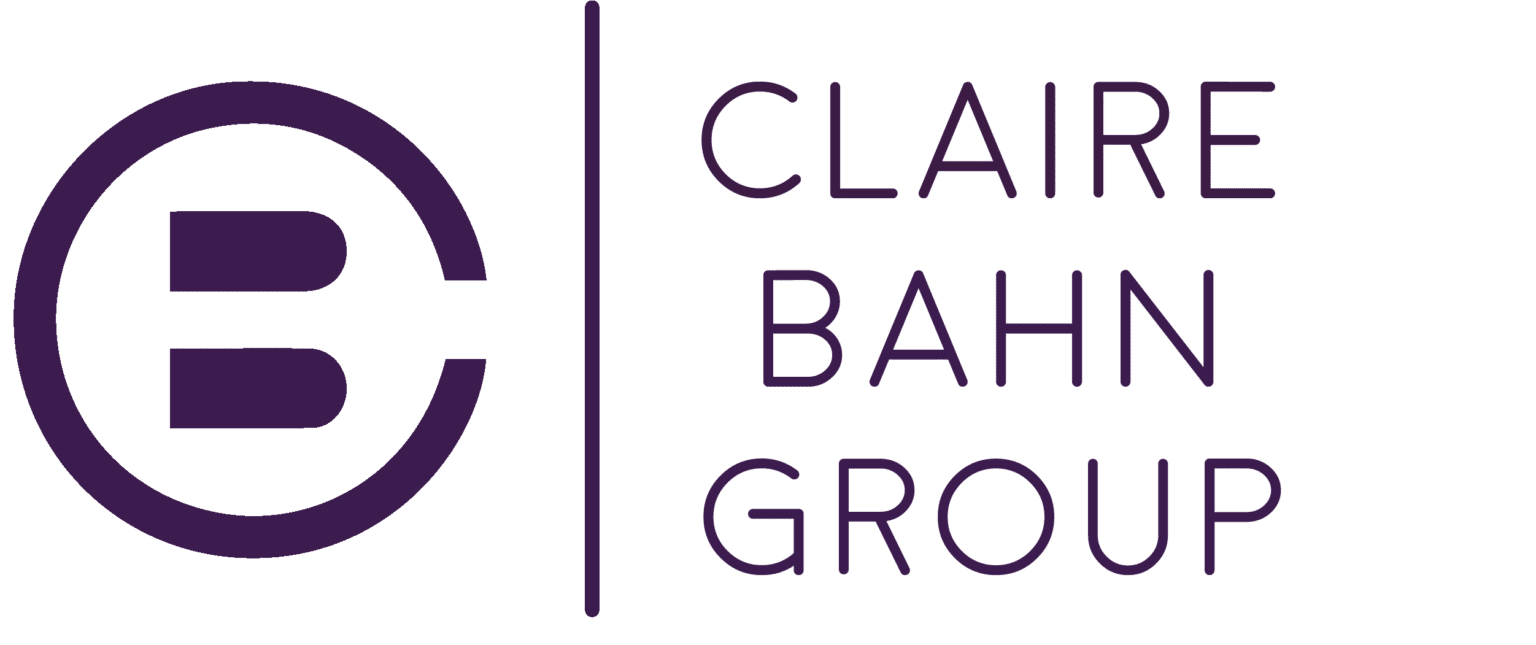Is hiring a public relations agency really worth the investment? How does a public relations agency measure success and demonstrate ROI? What can a PR strategy actually deliver for your brand in real terms?
In this blog, we break down exactly how a public relations agency proves its value, beyond just press hits. From brand visibility and thought leadership to measurable media impact and website traffic growth, you’ll see how strategic PR efforts directly contribute to credibility, audience trust, and long-term brand equity. Whether you’re a startup founder looking for traction or a seasoned executive ready to scale your influence, this post shows how PR can unlock real business opportunities.
The blog also walks through how a public relations agency like Claire Bahn Group customizes each campaign to fit client goals, budgets, and industries. Through real-world case studies and clear ROI metrics—like Share of Voice, SEO impact, and lead generation—you’ll get a transparent look at how PR success is tracked. If you’re evaluating whether a public relations agency is the right next step for your brand, this guide gives you the data, context, and insight to decide with confidence.
I’ve had clients cry on the phone from sheer relief. Not because we landed them a front-page feature (although we’ve done that) or booked them on a morning talk show (that too), but because, for the first time, they felt seen. They were understood, represented, and finally had the world paying attention to the story they’d been trying to tell for years.
That, to me, is what public relations is all about.
But understandably, one of the first questions new clients ask is: “How do you measure success in PR? What’s the ROI?”
It’s a fair question, and one I’ll answer in this blog. We’ll explore how a public relations agency like Claire Bahn Group operates, who benefits most, what you can expect to invest, and—yes—how we’re measuring PR ROI and defining PR success.
Whether you’re a CEO, startup founder, or thought leader considering working with a public relations agency, this guide is for you.
Table of Contents:
What Is a Public Relations Agency?
Is Hiring a PR Agency Worth It?
How PR Contributes to the Bottom Line
Understanding the Cost of a PR Agency
What is the Cost of a PR Agency?
How Do PR Agencies Bill Their Clients?
- Media Impressions
- Media Mentions and Placements
- Share of Voice (SOV)
- Website Traffic and Referral Analytics
From Visibility to Value: Additional PR Success Indicators
Lead Generation and Conversion
Social Proof and Community Growth
Surveys and Brand Lift Studies
Case Studies: Real Clients, Real ROI
- Thought Leadership in Data Science PR Case Study
- CEO Brand Elevation in B2B Marketing PR Case Study
- Global Finance Authority Recognition PR Case Study
What Is a Public Relations Agency?
“A public relations agency doesn’t just help you “get noticed”—we help you become remembered and respected.”
If you’ve ever confused PR with marketing or advertising, you’re not alone.
In my world, PR is the earned part of the communication mix. At its core, a public relations agency is a team of professionals dedicated to managing how your brand is perceived by the public, your industry peers, and the media. Unlike advertising, which is paid and controlled, PR is earned. That means we help shape your story and distribute it through trusted third-party sources like journalists, podcast hosts, and influencers.
We work to build your brand’s reputation and credibility through services such as media outreach, brand positioning, crisis communication, and executive visibility. A public relations agency doesn’t just help you “get noticed”—we help you become remembered and respected. This nuanced difference is what separates PR from traditional marketing. Where marketing might deliver a clear call to action, PR cultivates awareness, authority, and trust over time.
Who Needs a PR Agency?
The truth is, many brands and individuals can benefit from strategic public relations, but not everyone is at the right stage to fully leverage it.
If you’re a startup founder with a disruptive product and no media traction, a PR agency can help put you on the radar of investors, journalists, and customers. Similarly, if you’re a seasoned executive seeking to elevate your visibility and become a thought leader in your space, PR can position you as the go-to expert in your industry. Even established companies undergoing a rebrand or reputation rebuild often turn to PR agencies to guide the narrative and maintain public trust.
We’ve worked with tech innovators, B2B marketing executives, wellness influencers transitioning to corporate leadership, and finance veterans aiming for global recognition. What all these clients had in common was a desire not just to be seen, but to be seen in the right way, by the right people, at the right time.
Is Hiring a PR Agency Worth It?
Absolutely—when your goals align with what public relations can actually achieve.
Here’s what clients typically come to us seeking:
- Awareness: “No one knows we exist.”
- Credibility: “People are skeptical of what we offer.”
- Leads: “We need more inbound interest.”
One of the biggest misconceptions about PR is that it’s supposed to function like direct advertising. But PR isn’t about overnight leads; it’s about long-term credibility. Most clients come to us because they face challenges like low brand awareness, lack of third-party validation, or minimal inbound interest. These are the exact areas where PR thrives.
Through storytelling, media placements, and visibility strategies, we build the kind of brand equity that reduces skepticism and builds trust. And trust, as we all know, is the foundation for everything else—sales, partnerships, media invitations, and more.
How PR Contributes to the Bottom Line
Let’s talk about the tangible impact of working with a public relations agency.
Consider a niche SaaS brand we worked with. While they had respectable revenue, they lacked industry buzz. After landing features in TechCrunch, Forbes, and a key industry podcast, their website traffic surged, and they successfully closed a major funding round. One investor told them point-blank: “We kept seeing your name—we had to find out more.” That’s what PR does: it opens doors that might otherwise stay shut.
By increasing brand equity, PR helps you become a known quantity. This can translate into lower customer acquisition costs, better recruiting results, and even pricing power. It keeps you top-of-mind for when your audience is ready to buy, invest, or recommend you.
Understanding the Cost of a PR Agency
PR isn’t a commodity; it’s a partnership. And like any strategic investment, it comes with a price tag that reflects the level of service and customization you receive.
What is the Cost of a PR Agency?
“PR isn’t a commodity; it’s a partnership.”
Most retainers fall between $3,000 to $15,000+ per month. Why such a wide range? It depends on several factors. The size and experience of the PR agency play a role, as do the complexity and competitiveness of your industry. Tech clients, for instance, often require more intensive outreach than lifestyle brands due to the fast-paced nature of the space. Likewise, your goals—whether it’s regional visibility or national thought leadership—will affect the scope and resources needed.
At Claire Bahn Group, we don’t believe in cookie-cutter retainers. We tailor every engagement to your objectives. If someone wants coverage “just for the sake of it,” we often recommend against it. Without a strategy, even the biggest media hit won’t lead to meaningful ROI.
How Do PR Agencies Bill Their Clients?
PR agencies typically use a few common billing models:
- Monthly Retainers are the most popular. They offer predictable costs and allow for long-term strategy execution. This is our preferred model at Claire Bahn Group because storytelling takes time to build momentum. PR is not a one-hit wonder.
- Hourly Rates might be used for consulting or short-term projects where no ongoing relationship is required.
- Project-Based Fees are often applied to one-time efforts like product launches, event publicity, or crisis communications.
- Performance-Based Models are rare, but sometimes used as hybrid arrangements. We use these selectively and only when there are very clear deliverables that can be tracked over time.
How We Measure PR ROI
Now, for the big question: how do we go about measuring PR ROI and tracking PR success? We do this in a few ways:
- Media Impressions
- Media Mentions and Placements
- Share of Voice (SOV)
- Website Traffic and Referral Analytics
1. Media Impressions
Media impressions estimate the number of people who might have seen your feature. For instance, if you’re featured on Inc.com, which has 2 million monthly readers, that counts as 2 million potential impressions. While impressions aren’t the end goal, they indicate reach and visibility.
2. Media Mentions and Placements
We go beyond quantity. A mention in The New York Times is not the same as a blog feature with limited reach. That’s why we consider both the quality of the outlet and its relevance to your audience. Are we reaching the decision-makers you care about? That’s the key.
We track and categorize coverage using tools like Meltwater, Cision, Google Alerts, and through manual tracking for podcasts, YouTube features, and newsletters.
3. Share of Voice (SOV)
This is one of our favorite PR success metrics. Share of voice compares how often you’re mentioned in the media versus your competitors. If your company is mentioned in 20 out of 100 articles in your industry, you own 20% SOV. That’s a powerful way to visualize your growing influence.
4. Website Traffic and Referral Analytics
We closely monitor how PR placements drive website activity using Google Analytics, UTM tracking, and custom dashboards. Traffic spikes often follow media placements, but what really matters is what users do after they land. Do they stay? Do they convert?
When the right strategy is implemented, the average growth for many platforms is around 10%- 20% ROI. We beat these benchmark goals monthly.
From Visibility to Value: Additional PR Success Indicators
“When positive impressions of a company CEO generate positive sentiment through social media, this can create positive perceptions in other seemingly unrelated areas.”
There are a few additional indicators that can also track PR success:
Lead Generation and Conversion
Though PR doesn’t generate leads in a traditional way, its influence is undeniable. One client saw 17 demo requests the week their founder’s op-ed was published in a niche trade publication. That’s not a coincidence—that’s positioning at work.
Social Proof and Community Growth
Your credibility skyrockets when you’re featured in major publications or respected podcasts. We’ve seen clients gain thousands of new followers, get approached for new partnerships, and receive unsolicited media inquiries—all from one strong media cycle.
Social proof makes future outreach easier, both for sales and media. Once someone sees you’ve been featured in Forbes, they take you a lot more seriously.
Combining these elements can all lead to what we call a “halo effect.” When positive impressions of, say, a company CEO generate positive sentiment through social media, this can, in turn, create positive perceptions in other seemingly unrelated areas, such as less risk with a new product launch.
Advanced ROI Tools We Use
Once the foundational metrics are in place, we go deeper. These tactics provide a more in-depth analysis of measuring PR success:
- Brand Sentiment Analysis
- SEO and Domain Authority
- Surveys and Brand Lift Studies
Brand Sentiment Analysis
Using tools like NLP-powered sentiment analysis, we examine the tone of media coverage—are people praising you? Critiquing you? Mentioning you neutrally? A positive sentiment shift can indicate a successful positioning campaign, especially during a rebrand or crisis response.
SEO and Domain Authority
Backlinks from high-authority outlets improve your search rankings, driving long-term organic traffic, which is gold for SEO.
For one personal branding client, a feature in Business Insider gave them a DA 85 backlink, boosting their website ranking overnight. Over the next six months, organic search accounted for 55% of their leads.
Surveys and Brand Lift Studies
Sometimes, we go old school. We’ll survey your audience before and after a campaign to assess:
- Brand recall
- Favorability
- Association with key messages
It’s especially useful for awareness-based campaigns, and gives your board or investors something concrete.
Case Studies: Real Clients, Real ROI
Now, what does all of this information look like in practice? Here are some examples of real PR case studies highlighting the client’s industry and the corresponding results of implementing a PR strategy.
1. Thought Leadership in Data Science PR Case Study
We helped a senior data executive gain 500% more media and speaking requests. Her content was syndicated over 3,500 times per month, and she was named one of the Global Data Power Women of 2022. Her newsletter now reaches over 1,800 subscribers and counting.
2. CEO Brand Elevation in B2B Marketing PR Case Study
A CEO in the B2B marketing world increased her media engagement by 50%, with 20,000+ monthly shares of her video content. Her website generated 19,000 new views, and thanks to increased visibility, she formed a major partnership with Kendra Scott.
3. Global Finance Authority Recognition PR Case Study
A European finance executive grew his visibility by over 417,000% across social platforms. He was quoted in U.S. News & World Report and Fortune, appeared on multiple top podcasts, and his website saw a 1,481% increase in traffic—all organically.
Conclusion
Is a PR agent worth it? Working with a public relations agency is an investment in how the world sees and believes in you. PR is not about vanity. It’s about credibility, influence, and trust. It’s the story behind the headline, the perception behind the product, the force that gets your audience to say “yes.”
So when someone asks me, “How do you measure PR success?” I tell them:
“Visibility. Credibility. Opportunity—the kind that changes everything.”
That’s the ROI you can feel—before you even see the spreadsheet.
Ready to measure PR ROI for your brand? Let’s talk. Sign up for a strategy call today. Claire Bahn Group is here to help you become not just noticed, but unforgettable.


